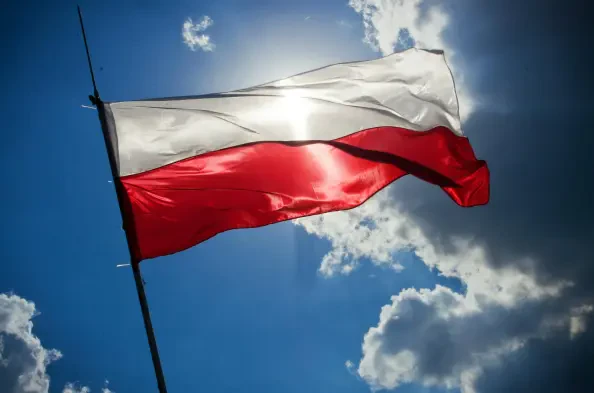Setting the Stage for Cyber Defense in Poland
Imagine a major city on the brink of losing its entire water supply due to a malicious cyberattack, with thousands of residents facing an immediate crisis, a scenario that recently unfolded in Poland. As a nation at the forefront of digital warfare due to its strategic position as a NATO member and staunch supporter of Ukraine, this near-catastrophic incident, narrowly averted by rapid intervention, underscores the critical role of cybersecurity systems in safeguarding national infrastructure. This review delves into the technological framework that Poland employs to counter such threats, exploring how these defenses stand up to relentless cyber hostility in a geopolitically charged region.
Poland’s significance in the European security landscape amplifies the stakes of its digital protection efforts. As a key ally in regional conflicts, the country faces a barrage of cyber threats targeting critical sectors like water, energy, and communication. The urgency to maintain robust cybersecurity systems is not merely a technical challenge but a matter of national stability, prompting significant investments and strategic planning to shield against sophisticated attacks.
Analyzing the Features of Poland’s Cybersecurity Technology
Incident Response and Real-Time Threat Mitigation
A standout feature of Poland’s cybersecurity apparatus is its capacity for real-time threat detection and response, as evidenced by the prevention of a devastating attack on a major city’s water supply. Deputy Prime Minister Krzysztof Gawkowski highlighted the last-minute intervention by digital defense teams, which thwarted a potential complete cutoff of water access. This capability reflects advanced monitoring tools and rapid deployment protocols that identify and neutralize threats before they escalate into full-blown crises.
Beyond this specific incident, the technology demonstrates a high success rate, with Gawkowski noting that 99% of attempted cyberattacks are successfully blocked. This impressive statistic points to a layered defense system incorporating firewalls, intrusion detection mechanisms, and automated response algorithms. Such features ensure that even when attacks slip through initial barriers, secondary safeguards are in place to minimize damage and maintain operational continuity.
Investment in Digital Fortification
Another critical aspect of Poland’s cybersecurity technology is the substantial financial commitment to bolstering digital defenses. With over 3 billion zlotys (approximately $800 million) allocated toward enhancing infrastructure protection, the country has prioritized cutting-edge software and hardware upgrades. This investment supports the development of secure networks, encrypted communication channels, and resilient data storage solutions, all tailored to withstand the evolving tactics of cyber adversaries.
The funding also facilitates training programs for cybersecurity personnel, ensuring that human expertise complements technological tools. By fostering a skilled workforce capable of adapting to new threats, Poland strengthens its overall defense posture. This blend of monetary support and capacity building underscores a proactive approach, aiming not just to react to attacks but to anticipate and prevent them through continuous improvement of systems.
Performance Under Pressure: Poland as a Cyber Target
Poland’s cybersecurity technology is rigorously tested by its status as a prime target for hostile digital operations among NATO countries. The nation’s unwavering support for Ukraine has drawn significant attention from adversaries, with frequent attacks attributed to state-sponsored actors seeking to destabilize key infrastructure. Past incidents, such as the breach of the state news agency PAP, illustrate the persistent and varied nature of these threats, challenging the resilience of Poland’s digital defenses.
Despite the intensity of these assaults, the performance of the cybersecurity systems remains commendable. The ability to fend off the vast majority of attacks highlights robust architecture and strategic foresight in deployment. However, the lack of transparency regarding specific details of incidents—like the identity of attackers or the targeted city in the water supply case—poses challenges in fully assessing the technology’s effectiveness against specific threat vectors and attributing responsibility.
The broader context of hybrid warfare further complicates the performance evaluation. Threats extend beyond pure cyberattacks to include sabotage and disinformation campaigns, often orchestrated to sow discord, as seen in a recent case involving foreign intelligence-driven acts of vandalism. Poland’s cybersecurity technology must therefore operate within a multi-dimensional threat landscape, requiring integration with physical security measures and international intelligence-sharing networks to address both digital and tangible risks.
Verdict on Poland’s Cybersecurity Defense Systems
Reflecting on the detailed examination, Poland’s cybersecurity technology has proven its mettle by averting a severe crisis in the water supply incident and consistently blocking a high percentage of attacks. The substantial investment and focus on real-time threat mitigation showcase a system designed to endure intense pressure, particularly given the nation’s vulnerable position in regional geopolitics. While the lack of detailed public information on certain attacks limits a complete performance assessment, the overall track record suggests a strong defensive capability.
Looking ahead, actionable steps include deepening international cooperation to enhance threat intelligence and attribution capabilities, ensuring that Poland can better identify and respond to adversaries. Further investments in emerging technologies like artificial intelligence for predictive threat analysis are also essential to stay ahead of evolving cyber tactics. Additionally, fostering public-private partnerships could strengthen resilience across critical sectors, creating a more unified defense front. These considerations point toward a future where Poland’s cybersecurity systems can not only react to threats but also proactively shape a safer digital environment.






